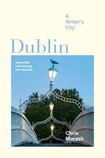
It used to be said that some people give directions by way of the pubs and some by way of the churches, and for too long, perhaps, the literary map of Ireland has been a pub crawl. Christopher Morash’s fine update on literary Dublin may begin with McDaid’s, but it soon moves beyond the powerful myth of the drinking writer made and mourned by Anthony Cronin in his book Dead As Doornails.
Echoing through the streets of “Baggotonia” are the well-shod footstep of Elizabeth Bowen, who was born at 15 Herbert Place. Sitting beside the canal we find not just Kavanagh, but also Beckett visiting his mother in her last days – or is it his character Krapp? – waiting on a bench for the blind on her window to be pulled down. There are so many different ghosts here, fictional and real; so many different ways, in this part of town, to be dead.
In the Shelbourne and the Gresham we see Bowen and Kate O’Brien honoured by the Women Writers’ Club, a group which met monthly to celebrate books and to battle censorship. Its members included the much loved children’s author Patricia Lynch and playwright Teresa Deevy, who visited with Liam Miller of the Dolmen Press and partied with Jack B Yeats. “Once you get a glimpse of the world of the Women Writers’ Club,” writes Morash, “their absence from the memoirs of literary Dublin becomes all the more remarkable.”
He is, perhaps, feigning surprise. The pub scene was refreshed by men arriving from the country, whose sometime misogyny was further inflamed by an outsider’s animus against the Dublin middle classes. Their interest in chaos was also an avoidance of humiliation, both social and sexual. These were, as Morash describes it, “hostile assemblies of individualists united by stout”. No one writes a book in a pub. Or no one writes a good book in a pub. Talents like McGahern and Austin Clarke went home to their desks, while visitors like Berryman and JP Donleavy confused alcohol with art and jumped right in.
You might, however, manage a small newspaper column while sitting at the bar – pub conversations fuelled much copy and the national conversation beyond. This was a public stage, the importance of which Morash prefigures with the coffee house and pamphleteering publishers surrounding Smock Alley Theatre in the western end of Temple Bar. In the 18th century, this was an “overheated urban village” of battling ideas, presided over by the ghost of Jonathan Swift who declared himself “King of the Mob” long before stag parties rampaged through these streets, trampling (as I imagine) the faces of writers on their tourist tea towels.
“Emotional memory, here, has so much power that the past and present seem to be lived simultaneously.” Morash, who is Canadian, quotes Bowen on the difficulty of describing a town whose air is so thick with literary association. On the plane to Ireland in 1985, this good reader tackled a biography of Oscar Wilde, only to discover that his digs were yards from Wilde’s first home on 21 Westland Row. Now a professor of English at Trinity College, his office is in the room where, it is likely, Esperanza laboured and Oscar first drew breath. It’s a lot, when you aren’t used to it: the fact that Shaw was born on Synge Street, that O’Casey was born on the same street as Richard Brinsley Sheridan, that Iris Murdoch was born around the corner from Molly and Leopold Bloom. To the literary mind, these streets are a cacophany.
Dublin, A Writer’s City was enabled by the lockdown of 2020, whose stillness brought Morash back to those Sundays of the 1980s with their sense of “an in-drawn breath”. The result is an attempt to read the city’s “collective memory” organised along the expanding circles of its growth. The book starts with the medieval core, followed by the grey-bricked Georgian layer, then the 19th-century city ringed by canals. It moves outwards as the city swallows the villages of Kilbarrack and Terenure, Finglas and Tallaght. Morash works a fluid historical axis, moving with ease from Danish traders to the wide streets commission, from James Stephens to Roddy Doyle. Each chapter details an “emotional atmosphere”, and is lightly held together by a shifting and ineffable sense of place.
The book charts how the movement of money to the southside of the river allowed the grandeur of the north inner city to lapse into the tenements, kip houses and brothels that gave us the plays not just of Behan and O’Casey but also ANU’s Louise Lowe and Owen Boss. The poverty here was also richly and chaotically at odds with middle-class respectability. “When people have nothing but their personalities” says Paula Meehan, “then there is an art to being in the world that is larger than life.”
One of the strongest threads holding this gyroscopic study together is a conversation between Meehan and Eavan Boland, one poet from the north inner city, the other from the apparently unliterary suburbs, where much of the actual writing got done. The sameness and privacy of suburban houses also offered new possibilities for dislocation, allowing writers to escape Ireland even as they were living in it, or remembering it. Morash points to the lingering sense, in Maeve Brennan’s Ranelagh, “that this could be elsewhere, and that here memories sit lightly on the surface”.
Each chapter drops, sometimes vertiginously, through time. A discussion of the Liberties raises the excavated bodies of dead Vikings, and it also truffles up the cloaked figure of James Clarence Mangan, 19th-century author of My Dark Rosaleen. There he is, out of his bip on laudanum, wandering the night streets in green eyeglasses and a “broad leafed, steeple shaped hat”; a man who, according to Joyce, was “the most significant poet of the modern Celtic world”.
Dublin, A Writer’s City is full of these welcome, uncanny returns. There is George Moore making “a kind of creative havoc” in Ely Place alongside his neighbour Oliver St John Gogarty, not to mention Bram Stoker’s brother a few doors down. To every house a writer, a character, a connection. You might say that wealthy, old Dublin was as bad as the internet, these days – everyone was scribbling. Everyone thought they had something to say.
My favourite of many ghosts here is that of the young John Banville, staying in a flat on Upper Mount Street with his Dublin aunt, and passing “a visibly dying” Kavanagh on her front steps. The poet would sit there for hours, glaring at the offices of the Dolmen Press across the road.
By moving away from Joyce and the old iconographies, Morash allows a new balance to emerge. It is good to see Leland Bardwell claiming her place in late Baggotonia, with boho salon to match that of Mary Lavin in Lad Lane. (Her rent was £2 a week for a room in a house that might tip €2 million these days.) It is good to see Christine Dwyer Hickey’s Farley from The Cold Eye of Heaven walking the quays, Declan Hughes’s Ed Loy scoping the mucky middle-class sins of Dún Laoghaire, as the book moves from the financial boom to the boom in genre fiction, making room along the way for new Irish writers like Chiamaka Enyi-Amadi and very young ones like Dylan Coburn-Gray.
The pleasure is in the detail, all of it nicely drawn. Imagine yourself walking past Trinity down Grafton street, cutting down Duke Street to browse the shelves of Hodges Figgis on a sunny afternoon. As you pass the statue of Edmund Burke, remember that he wrote his Philosophical Inquiry into the Origins of Our Ideas of the Sublime and Beautiful at the age of 19. Try not to beat yourself up about this – instead, as you pass the Bailey, consider the amusing fact this pub was bought by John Ryan, publisher of the Envoy, “by accident” at an auction “where he had gone to buy a toaster”.
Try not to despair at the way that property prices have now driven artists from the city, along with everyone under the age of 45 – instead, find a moment’s peace in Hodges Figgis. Pick an old book off the shelves that was written last year or a thousand years before, and remember that you are standing in one of the oldest bookshops in the world.
Dublin, a Writer’s City manages to be compendious in a small space, busy as the streets themselves and true to the remarkable spirit of a town that insists, decade after decade, a century ago and next year, in nurturing, goading and facilitating some of the most vibrant literature to be found in the English speaking world (an unfashionable opinion perhaps, but my own). Moving into the 21st century, it respects a living tradition and brings us a crucial step further along.
Anne Enright’s latest novel is Actress.
Further reading
Time Pieces: a Dublin Memoir (Hachette, 2016) by John Banville: Every sentence of this lapidary memoir summons the remembered city even as it describes the stonework of the streets we walk down today. Superbly atmospheric, anecdotal, and elegant. Banville’s painterly prose is well matched here by Paul Joyce’s photographs.
Dead as Doornails (Dolmen Press, 1976) by Anthony Cronin: This is the unavoidable, iconic book responsible for the myth of 1950s literary Dublin. Lightly ironic and brilliantly astute, it is a very companionable read. Morash also recommends Leland Bardwell’s A Restless Life for being “equally clear-eyed and more wide ranging”, sadly now out of print.
Dublin: an Urban History (Anne Street Press, 1989) by Niall McCullough: Intelligently illustrated by many photographs, maps and plans, this architectural view looks at the physical fabric of the city, bringing a contemporary sensibility that moves beyond the more usual Georgiana to look at how the city functions and is experienced, through time.














